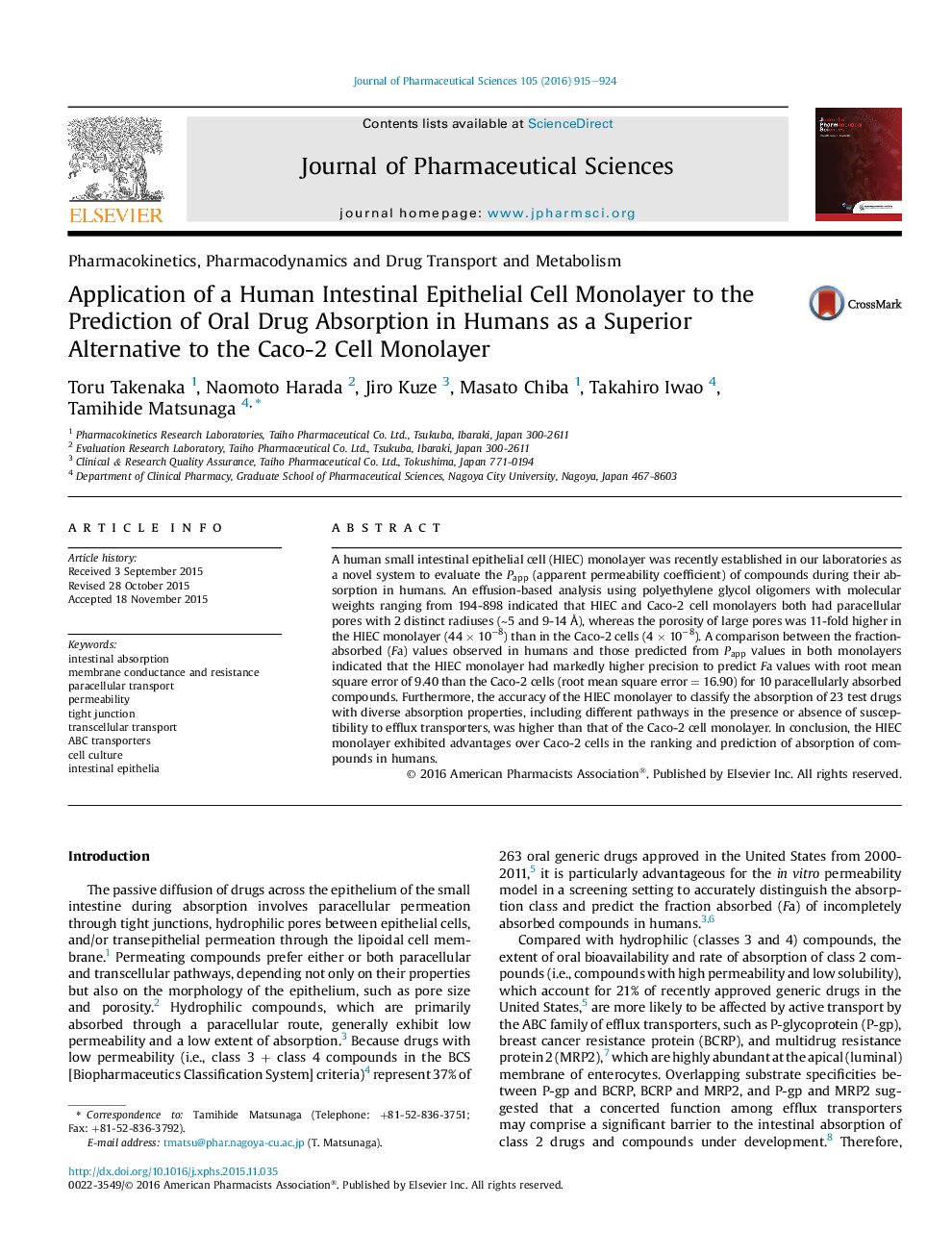| Article ID | Journal | Published Year | Pages | File Type |
|---|---|---|---|---|
| 2484296 | Journal of Pharmaceutical Sciences | 2016 | 10 Pages |
Abstract
A human small intestinal epithelial cell (HIEC) monolayer was recently established in our laboratories as a novel system to evaluate the Papp (apparent permeability coefficient) of compounds during their absorption in humans. An effusion-based analysis using polyethylene glycol oligomers with molecular weights ranging from 194-898 indicated that HIEC and Caco-2 cell monolayers both had paracellular pores with 2 distinct radiuses (â¼5 and 9-14 Ã
), whereas the porosity of large pores was 11-fold higher in the HIEC monolayer (44 à 10â8) than in the Caco-2 cells (4 à 10â8). A comparison between the fraction-absorbed (Fa) values observed in humans and those predicted from Papp values in both monolayers indicated that the HIEC monolayer had markedly higher precision to predict Fa values with root mean square error of 9.40 than the Caco-2 cells (root mean square error = 16.90) for 10 paracellularly absorbed compounds. Furthermore, the accuracy of the HIEC monolayer to classify the absorption of 23 test drugs with diverse absorption properties, including different pathways in the presence or absence of susceptibility to efflux transporters, was higher than that of the Caco-2 cell monolayer. In conclusion, the HIEC monolayer exhibited advantages over Caco-2 cells in the ranking and prediction of absorption of compounds in humans.
Keywords
Related Topics
Health Sciences
Pharmacology, Toxicology and Pharmaceutical Science
Drug Discovery
Authors
Toru Takenaka, Naomoto Harada, Jiro Kuze, Masato Chiba, Takahiro Iwao, Tamihide Matsunaga,
